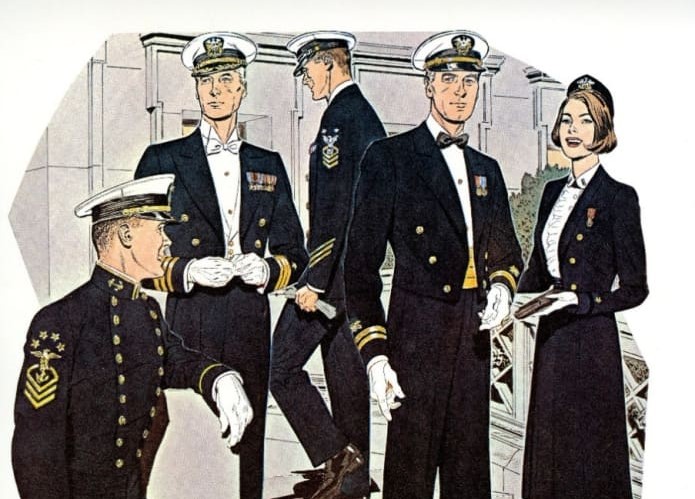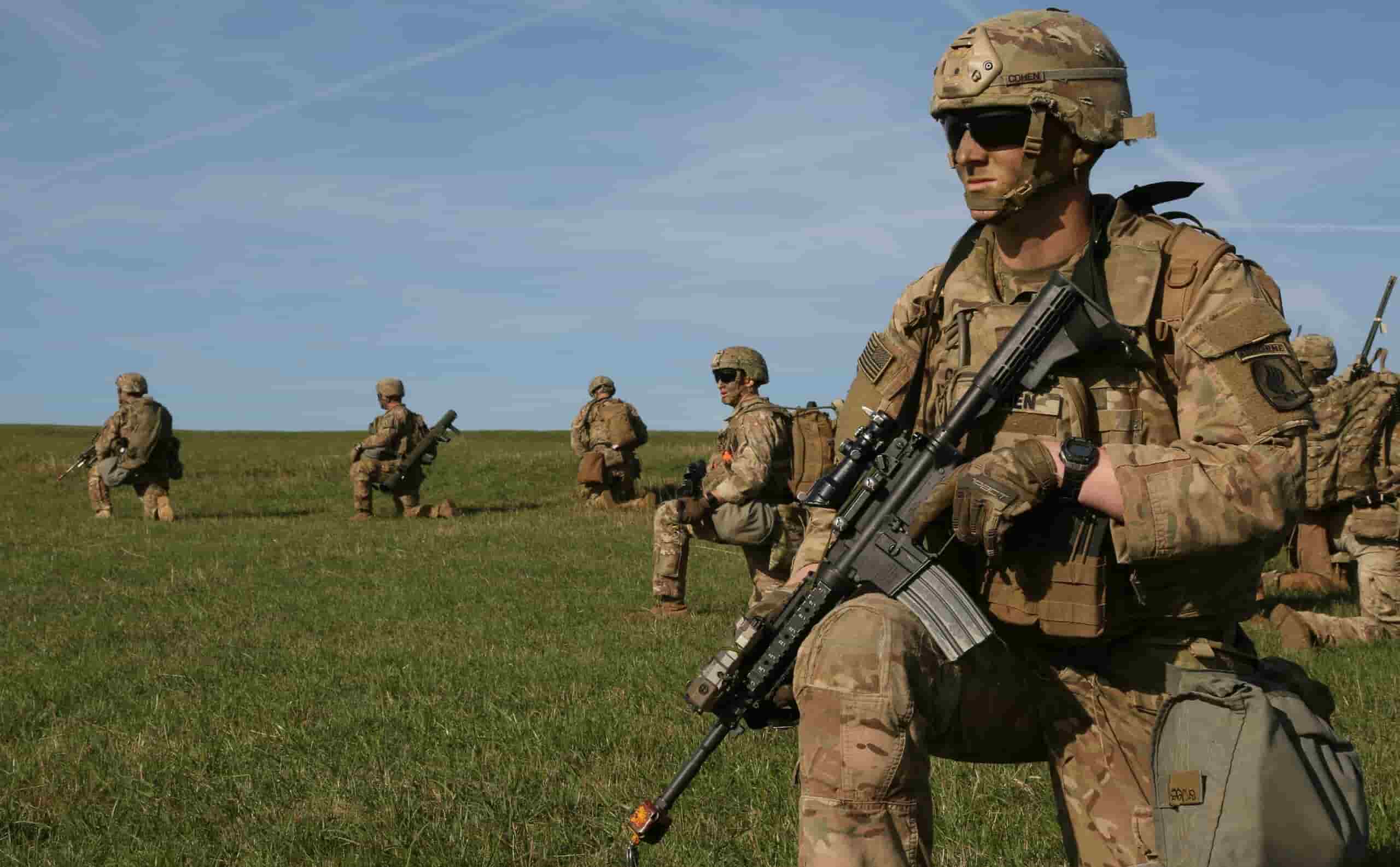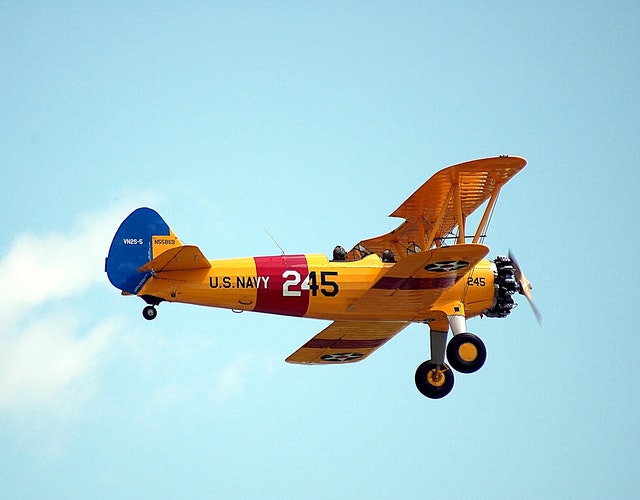When deciding which branch to join, you must first fully understand what that branch does and what it requires.
The United States Navy is a branch of the United States armed forces. The requirements for joining the Navy vary depending on the Navy job for which you wish to apply. Enlistment in the Navy is possible in a variety of positions, each with its own set of requirements that must be met before a person can join.
Do you want to learn more about Navy Enrollment Requirements? We’ve got your back! This article will teach you everything you need to know about Navy Enrollment Requirements and will also provide you with our free Navy ASVAB Practice Test pack. If you want to know what you need to join the Navy, read this article!
What to know about the Navy?
The U.S. The Navy (USN), which is one of the 8 uniformed services of the U.S., is the largest navy force in the world. They must protect waterways including the sea and ocean outside of the Coast Guard’s jurisdiction. The runways to land and take off at sea for aircraft are provided by the Navy warships.
Requirements to Join the Navy
What are the requirements to be in the Navy? The basic requirements for joining the Navy are listed as follows:
- Citizenship requirements: You must be a legal U.S. citizen or a resident alien to enlist
- Age requirements: To serve in the Navy, be 17-34 years old. Seventeen-year-olds need their parents’ permission.
- Education requirements: With very rare exceptions, you must possess a high school diploma or equivalent degree. In addition, pass the ASVAB test.
- Medical requirements: Pass a Military Entrance Processing Station medical exam.
- Background check: Applicants need to have no felony convictions or more than one misdemeanor conviction in their lifetime
Navy Age Requirements
So, at what age can you join the Navy? To be eligible to serve in the Navy, you must be no older than 34 but at least 17 years old. The minimum age limit for the Navy is 17 with your parental consent.
If you want to join without being under your parents’ consent, you must be at least 18 years of age.
Citizenship Requirements
If you are a U.S. citizen or a Legal permanent resident, you meet the requirements to be eligible to join the Military including the NAVY branch. Documents you may present to prove your citizenship, residency, or alien registration status, are your birth certificate, Social Security card, permanent residence visa, or a Registered Alien Green Card.
Navy Education Requirements
One of the Navy Enrollment requirements is Educational requirements. Education requirements to join the Navy as an enlisted member include a high school diploma or general equivalency diploma.
Meanwhile, if you wish to become an officer, a high school diploma or GED is not enough to make your dream come true. If You want to enter one of the Navy’s officer programs, you must hold at least a bachelor’s degree from an accredited college or university.
If you want to apply for the Officer Aptitude Rating (OAR) and Aviation Selection Test Battery (ASTB) to become an officer candidate, you must also achieve a qualifying score on the ASVAB test, a test is designed to gauge your knowledge, your aptitude for the various career fields in the Navy and the likelihood of your success in Navy training programs. A minimum AFQT score of 35 is required while it is at least 50 and 15 hours of college credit for GED candidates.
Fortunately, we’re here to help with a set of ASVAB practice tests whose questions have been collected and developed to optimize your experience. ASVAB could be much easier to earn!
Navy Health Requirements
Generally, potential enlisted members should be in good physical condition to be able to pass the military entrance medical exam, which includes many tests such as a physical exam, hearing test, vision test, and height/weight measurements.
Indeed, to become an enlisted recruit or officer in the Navy you must first meet height and weight standards. Besides, you must also pass hearing, vision, and flexibility tests. You must complete blood and urine tests to make sure that you don’t have any illnesses or diseases. Then your urine samples will also be in a urinalysis test to make sure that you do not have drugs or alcohol in your system.
Background Check
Whether candidates joining the Navy are joining as enlisted members or as an officer, they must undergo a background investigation, even including traffic offense history, and criminal history,…
In detail, you may get fingerprinted and have your criminal and credit histories investigated by the Navy. Your traffic ticket history can also be checked. Moreover, the background investigation of the Navy may also include interviewing those who know you, consisting of relatives, neighbors, colleagues,… those your acquaintances through the past five years or longer.
Read more >> New U.S. Navy Weight Requirements
Into the ASVAB: What to know?
As mentioned above, The ASVAB is a test that measures your aptitudes. It consists of 9 subtests: Arithmetic Reasoning, Assembling Objects, Auto and Shop Information, Electronics Information, General Science, Mathematics Knowledge, Mechanical Comprehension, Paragraph Comprehension, and Word Knowledge.
When you take the ASVAB, you will receive scores on each of these specific tests, as well as several individual test results that are combined to yield three academic composite scores: verbal, math, and academic ability. The minimum ASVAB score for joining the Navy is 35.
To be much more confident and ready before the coming ASVAB test, let’s check out our comprehensive ASVAB practice test!
Recruit training: NAVY boot camp
Intending to introduce military life to recruits and get them ready for the coming high operational standards, Recruit training in the Navy becomes more challenging. The Navy has significantly increased physical fitness training and introduced “battle stations.”
Battle stations are the last event of Navy boot camp. It begins at 10 p.m. and does not end until 9:30. During this time, recruits must overcome 12 many tough challenges.
Where is a boot camp?
It’s located at Recruit Training Command in Great Lake, Illinois.
How long is boot camp for the Navy?
about seven weeks
Recruit training, known as Boot camp, will last approximately seven weeks. The goal of this training is to train you into a Sailor with all of the skills necessary for the fleet.
Do you go home after Navy boot camp?
After graduating from Navy boot camp, sailors would not be allowed to leave and also are required to travel to their next training location, A Training School.
Is Boot Camp 7 days a week?
The answer is Yes. There are no days off. There will be at least one instructor overseeing you even at weekends.
How difficult is Navy boot camp?
The first three weeks of Navy Boot Camp are the toughest and most challenging. If you can get through the first three weeks, you’ll almost graduate.
What can I do in the Navy?
There are lots of things to consider when joining the Navy. It’s said that The Navy would spend significant time training and preparing you for a new career. In addition, opportunities are available for you. The Navy has more than 80 enlisted jobs. Job classifications in the Navy are handled a little differently than in the other branches. There are numerous positions, from serving on surface ships/submarines to working in the fields of electronics, engineering, computer technology, nuclear propulsion, and aviation, to serving in special operations traveling the world.
Besides, Navy SEALs (sea, air, and land) are the special operations force for this branch while all service members are known as sailors. The reserve component is the Navy Reserve.
Advantages of joining the Navy
There are plenty of great perks you should keep in mind:
- Salaries: You are paid twice every month, at the beginning and the middle of the month, based on your pay grade and service requirements.
Additionally, it provides sufficient financial support for families of Navy members. Navy service members often earn higher salaries than they could anywhere else, which results in the ability to provide a higher level of financial support to their families. That is to ensure that even when they are away from home for a long period, their families not only would not suffer but also have a good quality of life.
- Promotion: You would be promoted based on job knowledge, your performance, time in pay grade, and service requirements.
- Paid vacation: You earn 2.5 days of paid vacation every month for a total of 30 days every year, up to 60 days.
- Training: You choose your career path based on your aptitude, physical abilities, security clearance, motivation, and determination.
- Health benefits: While on active duty, you will receive complete medical and dental care at no cost to ensure the health and strength of your officers. Once you become a Navy, you will no longer have to worry about your health care expenses.
- Life insurance: Active-duty members select up to $200,000 in term life insurance for $18 per month.
- Allowances: You would also receive tax-free money for Basic Allowance for Housing (BAH); Basic Allowance for Subsistence (BAS); and a uniform allowance (for enlisted personnel only) to help you maintain your uniform.
- Tax advantage: Only your basic monthly pay is subject to federal or state income tax.
- Military discounts: There are various discounts in all businesses for members of any military force. In addition, the military has a special flight program for members including the Navy to register and enjoy free air travel.
- Education benefits: quality and totally free education and training.
GI Bill: The GI Bill helps pay for college education or vocational training.
Tuition assistance: While serving time, you can continue your education and maybe help in defraying the cost of college-accredited courses.
The Navy helps you to obtain a college education at their expense, paying nearly all of the tuition. After enlisting, you can attend classes even while on the ship. The Navy also offers world-class training to its sailors.
- Additional advantages: There are exchange and commissary privileges, moving allowances, temporary lodging expenses, travel, survivor benefits, and more. It also brings travel opportunities. Just like other branches of the US military, the Navy brings you travel opportunities, but it is superior when it comes to this area. Moreover, it enables lifetime bonds. Spending months on a ship with the same companions may build friendships and even a second family.
What Reserve opportunities are in the Navy?
There are various opportunities in the Navy Reserve for enlisted members. The Navy Reserve recruits veterans, professionals, and those with special skills and training. If you’re eligible, you may qualify for advanced rank or pay.
Special programs are available for:
- Medical careers
- Intelligence
- Construction forces (Seabees)
What are the requirements to join the Navy Reserve?
Specific requirements depend on the program you are applying for. Generally, you must:
- Be a U.S. citizen or a resident alien.
- Meet all physical, mental, and moral standards.
- Hold a high school diploma.
- Obtain a required score on the ASVAB test.
- Pass a Military Entrance Processing Station medical exam.
What is the U.S. Navy SEAL?
The SEALs (Sea, Air, and Land) – were created by President John F. Kennedy in 1962 to conduct unconventional and counter-guerilla warfare. It’s the U.S. Navy’s initial special operations force. Among the SEALs’ main functions is conducting small-unit special operation missions in maritime, jungle, urban, arctic, mountainous, and desert environments, SEALs are typically ordered to capture or eliminate high-level targets, or to gather intelligence behind enemy lines.
SEAL teams are located on the East and West coasts of the United States. Arguably, they are regarded as the preeminent defensive force in the world. SEALs operate some of the most sophisticated equipment available.
SEAL missions are strictly classified and require the highest degree of precision. That’s why SEAL training is some of the toughest in the world. SEALs receive training in:
- Underwater navigation and warfare
- Land navigation and warfare
- Small unit tactics
- Airborne training
- Demolitions and explosives
- Other specialty schools
How do I become a SEAL?
To serve as a Navy SEAL, you will have to pass the toughest training in the world. Research and be prepared carefully for it!
Are there promotions to Navy officer rank?
Yes. Several programs are available.
Are there opportunities for professionals in the Navy?
The Navy has some special programs for health care, theological, and law professionals. You may be eligible to enter the Navy at a higher rank and pay. If you’re in one of those professions, the Navy might provide you with educational assistance.
How long will I be at sea?
Generally 10 to 14 days each month for training operations. Extended operations away from the home port may last up to six months. This varies depending on the mission and what kind of ship that you’re in. Ships on six-month deployments often spend part of their time visiting ports worldwide.
Can certain training schools or duty stations be guaranteed to me upon enlistment?
Yes is most likely the answer. It would depend on your terms of commitment, specialty, and the Navy’s requirements.
Does the Navy accept people with prior service?
Yes. If you have served for at least 180 days and have no more than five years of broken service, you may be eligible to rejoin the Navy without attending basic training and at the rank of your separation.
It’s time to start studying for the ASVAB to be considered for a Navy enlistment!

ASVAB General Science Study Guide In 2024
April 25, 2023

A Complete Pictorial History Of US Navy Uniforms From 1776 To 1967
Follow this article to find out the pictorial history of US Navy uniforms from 1776 to 1976 and beneficial information about US Navy uniforms as well!
March 9, 2022

Can An Immigrant Join The Army In The United States? [2024 Updated]
Can an immigrant join the Army? You do not have to be a U.S. citizen to enlist in the Army but you need to meet some requirements. Read this post to know more.
March 5, 2022



